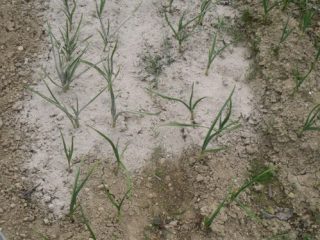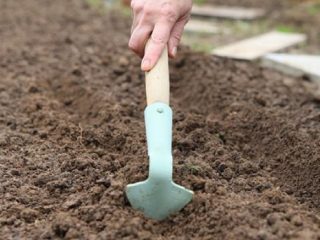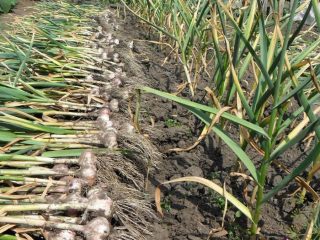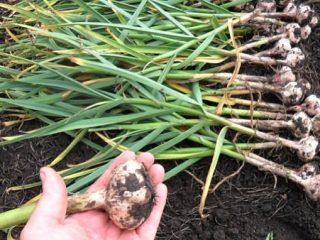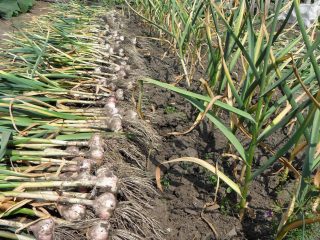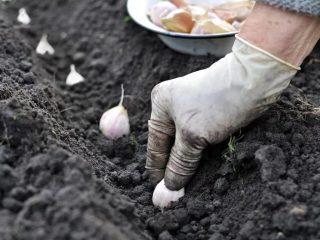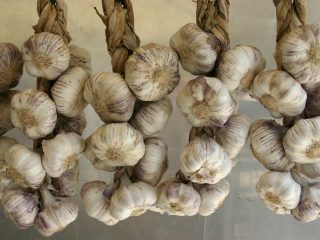Content
Despite the unpretentiousness of garlic, the quality and quantity of the crop grown depends on many factors. These include correct alternation and proximity on the site. For example, planting garlic after carrots is not as favorable as in the reverse order, and there are a number of reasons for this that every gardener should know.
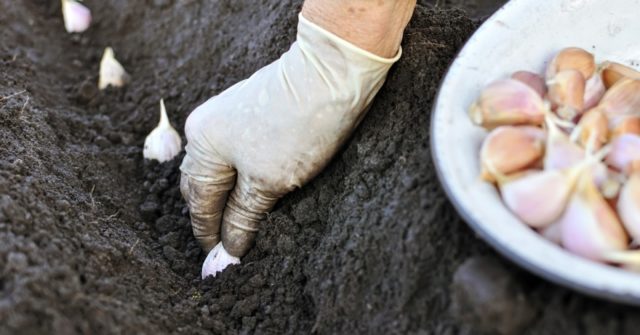
If you do not follow the rules of crop rotation for garden crops, you will not be able to get a good harvest.
Is it possible to plant garlic after carrots and vice versa?
Root vegetables, in particular carrots, are among those garden plants that greatly deplete the soil. Its taproot, deep-lying root system requires a lot of nutrients, and, given this feature, it is preferable to plant crops with above-ground fruits next year. Some vegetable growers even recommend giving the soil a rest.
Carrots take a large amount of phosphorus and potassium from the soil, so vegetables that need these components in the soil should not be planted after the root crop. The harvest will be low, and the plants themselves will grow with weakened immunity. It is best to plant garden crops such as:
- pepper (different varieties are suitable);
- legumes (beans, peas, soybeans);
- nightshades (tomatoes, potatoes, eggplants);
- White cabbage;
- radish.
For garlic, especially winter garlic, such a predecessor is not at all suitable. It is best to choose an area where the following crops previously grew:
- legumes (soybeans, lentils, beans, peas);
- cereals (millet, fescue, timothy);
- pumpkin (zucchini, squash, pumpkin);
- cucumbers;
- cauliflower and white cabbage.
But garlic itself is a specific crop, after which many garden plants can be planted. And for carrots, this predecessor is considered favorable. Since the main pest of root crops are carrot fly larvae, planting afterwards will be an excellent preventative against the appearance of unwanted insects. In addition, its root system is short, and it receives nutrients in the upper layers of the soil. Consequently, all the necessary micro- and macroelements for carrots remain, and when planted after garlic, the root crop does not suffer from their deficiency.
Is it possible to plant garlic along with carrots?
Despite the undesirable planting of garlic after carrots, these vegetables do well together. The main advantage of such a neighborhood is precisely the deterrent effect of phytoncides on carrot flies, psyllids, and aphids. In addition, garlic also prevents the occurrence of fungal diseases in nearby growing crops.
Also, the advantages of nearby beds of these vegetables include:
- formation of larger garlic bulbs;
- winter garlic leaves remain green and juicy for a long time due to the enzymes secreted by carrots;
- The commercial quality of the harvest of both crops improves, and the shelf life of the fruit increases.
Planting carrots and garlic in the same bed
In order to save space, some gardeners practice the method of planting different crops in one bed. Since the proximity of garlic and carrots is considered successful for both vegetables, growing them in the same area is also acceptable.
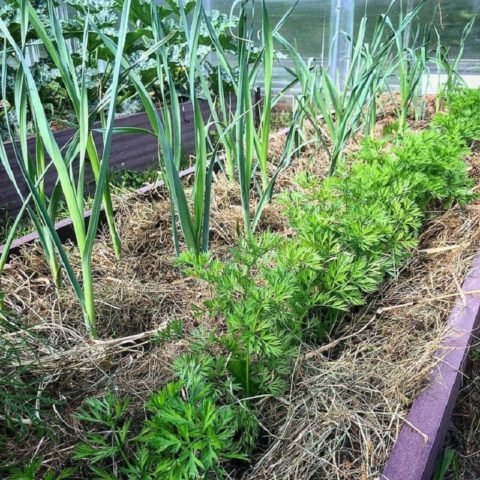
In a carrot bed, you can plant garlic in the rows or in a mixed way.
One of the best methods for planting these two vegetables is “before winter”. Unfortunately, this method is not known to many, but if done correctly, the harvested crop will be very surprising.
To successfully plant winter varieties of carrots and garlic, you should prepare the bed in advance. To do this, 30-35 days before the expected sowing date, the site is dug up and fertilized abundantly. In this case, organic and mineral complexes should be added 1.5 times more than with standard autumn digging. This is necessary to provide vegetables with nutrients in the proper quantities.
The sowing of crops itself is carried out at the end of September or beginning of October (the time depends on the climatic conditions of the region, it is important that the constant temperature is at least + 5-7 0C). In this case, alternation should be performed (a row of carrots through a row of garlic), and the row spacing should be at least 20 cm. The cloves should also be placed at a distance of 15-20 cm from each other so that there is no strong shading in the garden bed.
In the spring, when all the snow has melted and the garlic begins to sprout, the bed is covered with film. It is removed in May, by which time the carrots should have sprouted. To prevent garlic from beginning to choke its growth, its leaves should be trimmed. In addition to increasing lighting, this procedure also promotes the release of essential oils, which protect the root crop.
Harvesting takes place in autumn. Despite the fact that winter varieties of garlic usually ripen by the end of July, periodic pruning of the greens allows you to keep the heads until autumn and dig them up at the same time as the carrots. Thus, the keeping quality of the resulting crop increases.
Conclusion
It is not advisable to plant garlic after carrots, but planting the root vegetable the next year after it can be an excellent prevention of harmful insects. The joint cultivation of these crops is also favorable, and this can be done either in neighboring beds or mixed.

